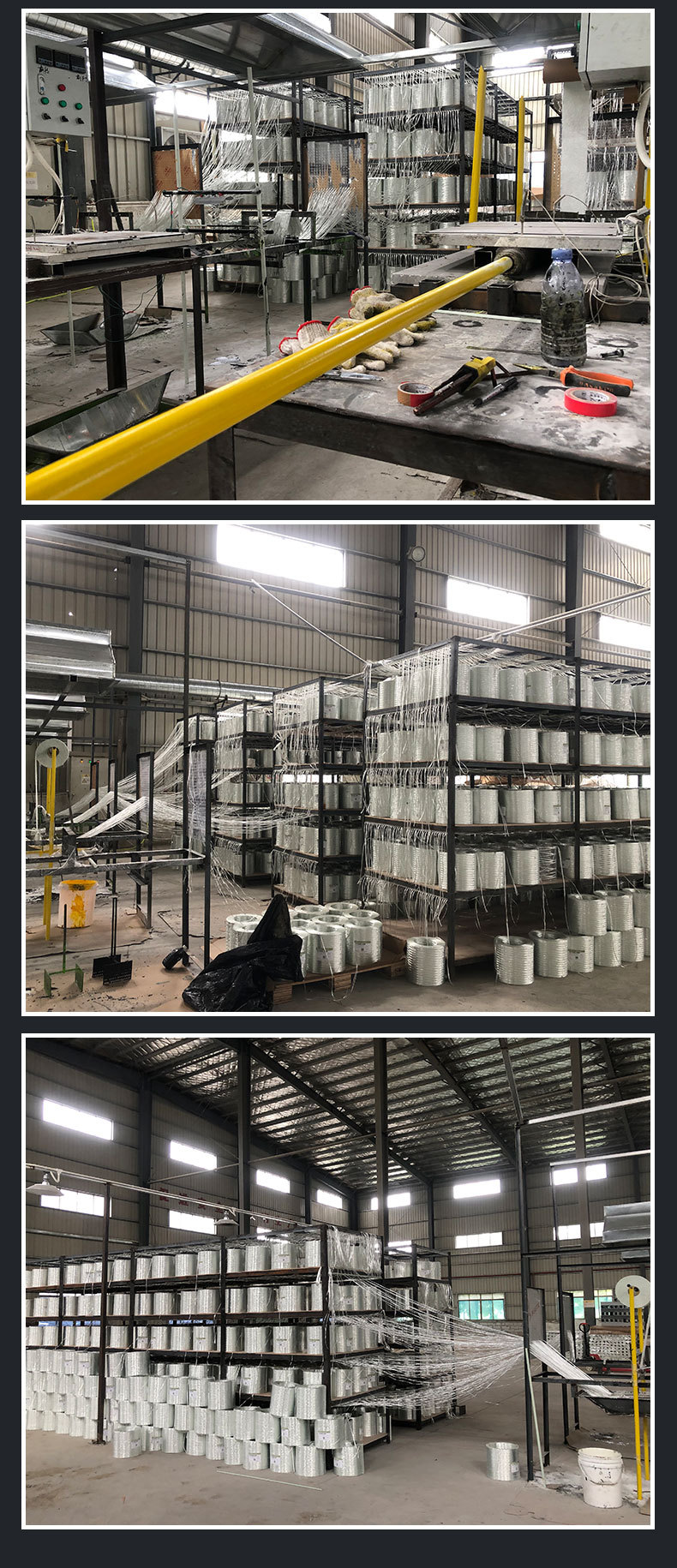| Parameter | Details |
| Length | Standard: 3m, 4m, 6m; Custom up to 12m |
| Side Length | Customizable: 100mm to 1000mm |
| Wall Thickness | 3mm to 10mm |
| Tensile Strength | 100MPa to 200MPa |
| Flexural Strength | 138MPa to 221MPa |
| Compression Strength | 117MPa to 170MPa |
| Resin Type | Unsaturated polyester or epoxy resin |
| Fiber Content | 25%-30% by weight |
| Coating | UV protective or polyurethane coating |
| Customization | Colors and surface textures available |
| Corrosion Resistance | Resistant to acids and alkalis |
| Applications | Construction, chemical plants, marine, and more |
Overview
Glass Fiber Reinforced Plastic (GFRP) Square Pipe is a composite structural section with a rectangular cross-section, produced via pultrusion or custom molding, combining glass fiber reinforcements with thermosetting resins. The square geometry offers superior resistance to torsional and bending loads compared to round tubes, making it ideal for structural framing applications. Standard sizes range from 25x25mm to 300x300mm, with wall thicknesses of 2-15mm and lengths up to 12 meters, customizable for specific load requirements.
The pultrusion process creates a uniform distribution of longitudinal and transverse fibers, resulting in balanced mechanical properties: tensile strength of 200-350 MPa, flexural strength of 250-400 MPa, and shear strength of 40-60 MPa. The inner and outer surfaces can be smooth, textured, or coated with anti-corrosive gel-coat, ensuring durability in harsh environments.
Features
Structural Efficiency: The square cross-section provides higher moment of inertia and section modulus, allowing for lighter structures with equivalent load-bearing capacity compared to round tubes or steel channels.
Multi-Axial Strength: Balanced fiber orientation offers strong performance in both axial and lateral loads, making it suitable for beams, columns, and truss members in complex frameworks.
Corrosion & Chemical Resistance: Inherits the same environmental resistance as other GFRP products, withstanding prolonged exposure to saltwater, industrial chemicals, and atmospheric pollutants without degradation.
Aesthetic Versatility: Smooth gel-coat finishes are available in various colors, eliminating the need for additional painting and providing a modern appearance for architectural applications.
Fire & Smoke Compliance: Formulations with halogen-free, fire-retardant resins meet EN 13501-1 fire safety standards, emitting low smoke and toxic fumes during combustion, critical for public buildings and transportation.
Applications
Building Construction: Framing for modular buildings, mezzanine floors, and balcony railings, especially in coastal or industrial zones where steel corrosion is a concern.
Industrial Machinery: Machine frames, conveyor supports, and robotic arm structures, reducing vibration and noise while maintaining precision alignment.
Transportation: Bus and truck body frameworks, trailer supports, and railcar interiors, leveraging lightweight properties to improve fuel efficiency.
Renewable Energy: Support structures for solar panel arrays, wind turbine access ladders, and geothermal heat exchanger frames, combining strength with resistance to environmental stresses.
FAQ
Q: How does GFRP Square Pipe connect to other structural components?
A: Connections can be made using mechanical fasteners (bolts/nuts), adhesive bonding, or custom-fabricated composite brackets. Pre-drilled holes should have edge distances of at least 2x pipe wall thickness to avoid stress concentrations.
Q: What is the maximum span for a square pipe beam?
A: Span capacity depends on size, load type, and support conditions. A 100x100x5mm pipe can typically span 3-4 meters under uniform load (1.5 kN/m²), but detailed engineering analysis is recommended for critical applications.
Q: Can it be used in cold climates?
A: Yes, withstanding temperatures as low as -50°C without brittleness. The low CTE ensures minimal dimensional change in thermal cycling, reducing stress on connected components.
Q: Is there a weight limit for overhead installations?
A: The lightweight nature (density 1.8-2.1 g/cm³) allows for safe overhead use, but proper structural design considering dead load, live load, and seismic forces is essential. Consult the manufacturer for load tables.























